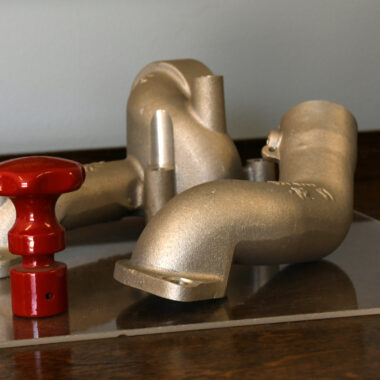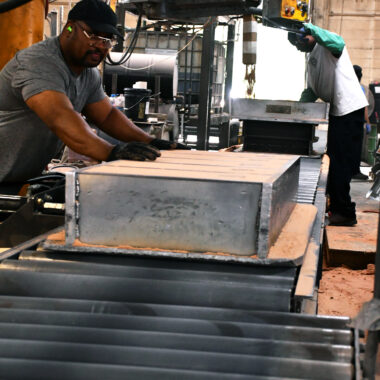Enhancing Performance: Unleash the Power of Aluminum Casting for Superior Products
Enhancing Performance: Unleash the Power of Aluminum Casting for Superior Products
Blog Article
Dive Into the Globe of Light Weight Aluminum Spreading: Comprehending the Different Approaches
Light weight aluminum spreading is an essential procedure in the manufacturing sector, with various methods employed to create specific and intricate components. From the conventional sand casting approach to the advanced die casting procedure, each method provides one-of-a-kind advantages depending on the demands of the task.
Sand Casting Technique
Sand casting, a widely-used method in light weight aluminum spreading procedures, entails developing mold and mildews made of compacted sand for pouring molten metal. As soon as the mold and mildew is all set, it is safely put in a flask and molten aluminum is poured into the cavity.
After the steel has actually cooled down and solidified, the sand mold is escaped to reveal the light weight aluminum spreading. Sand casting allows for the production of intricate shapes and huge components that may be tough or expensive to produce using various other approaches. It is likewise a sustainable strategy as the sand can be reused and utilized multiple times, reducing waste in the spreading process.
Permanent Mold And Mildew Method

One substantial benefit of the Irreversible Mold And Mildew Strategy is the boosted dimensional precision it supplies. The steel mold and mildew permits for tighter resistances and better details in the final aluminum castings contrasted to sand spreading approaches. This accuracy makes it a favored option for applications where tight dimensional control is important, such as in the vehicle and aerospace markets.

Pass Away Casting Refine

Financial Investment Casting Approach
Making use of a precision casting approach, Investment Casting Method involves developing detailed aluminum parts by putting molten metal right into a ceramic mold and mildew. This procedure, also known as lost-wax spreading, starts with the development of a wax pattern of the preferred part (aluminum casting).
Financial investment spreading is typically utilized for manufacturing elements in sectors where intricate styles and limited resistances are required, such as aerospace, vehicle, and clinical equipment. The flexibility and accuracy of the browse this site Financial investment Casting Approach make it an important method in the globe of light weight aluminum casting.
Lost Foam Casting Technique
Having actually discovered the detailed precision of Investment Casting Method, the emphasis now moves to the innovative approach of Lost Foam Casting in aluminum element manufacturing. Lost Foam Spreading, additionally referred to as evaporative pattern casting, is a modern technique where a foam pattern of the desired part is produced and then coated with a refractory material. The covered foam pattern is then buried in sand, and molten aluminum is poured into the mold. As the metal fills the mold and mildew, the foam vaporizes due to the heat, leaving a clean cavity in the shape of the wanted component.
One of the major advantages of Lost Foam Casting is its capacity to create complex forms with complex information, frequently in a solitary item without the need for added machining. This technique is also understood for its high check this site out dimensional accuracy and smooth surface coating. In Addition, Lost Foam Spreading is a cost-effective procedure as it lowers the need for cores and allows for the manufacturing of lightweight elements. In spite of its advantages, Lost Foam Casting calls for mindful control of the spreading procedure to prevent flaws and make sure quality elements.
Verdict
To conclude, light weight aluminum casting offers a selection of methods such as sand spreading, irreversible mold and mildew strategy, die spreading, financial investment casting, and lost foam spreading. Each method has its own benefits and applications, making light weight aluminum casting a functional and widely used procedure in different industries. Recognizing the distinctions between these methods is crucial in selecting one of the most ideal casting technique for particular production requirements.
Sand casting, a widely-used approach in aluminum spreading processes, includes creating molds made of compacted sand for putting molten steel. aluminum casting.The Long-term Mold Strategy, like sand spreading, is one more widespread technique utilized in light weight aluminum casting processes, providing distinctive benefits in terms of mold and mildew reusability and dimensional precision. The metal mold permits for tighter tolerances and finer information in the last aluminum spreadings contrasted to sand casting approaches. The 2 major types of die spreading are cool chamber die casting and hot chamber pass away casting, each ideal for different kinds of aluminum alloys.In verdict, aluminum spreading offers a selection of techniques such as sand casting, long-term mold and mildew strategy, die casting, investment spreading, and lost foam spreading
Report this page